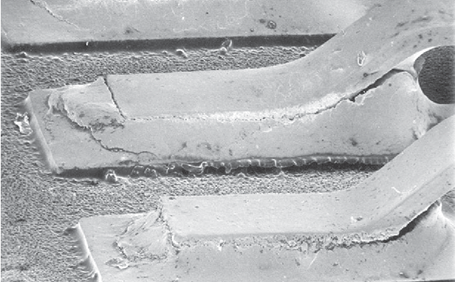Creep Performance for Solder Joint Reliability_Shenzhen Fitech

Creep Performance for Solder Joint Reliability_Shenzhen Fitech
Solder joint reliability is the ultimate requirement for electronic packaging, however, the effective life of electronic packaging is affected by a variety of thermo-mechanical deformation. Creep is considered to be one of the main mechanisms of solder joint failure.
Creep is a slow deformation phenomenon that occurs when materials are subjected to high temperatures and stresses. Creep usually occurs only when the operating temperature is about 50% of the melting point of the solder (i.e., T=0.5Tm). Solder joints are susceptible to creep when subjected to the interaction of temperature and load over a long period of time. This deformation may lead to changes in the shape of the welded joint, stress concentration, crack generation, which in turn affects the reliability of the welded joint. Creep performance refers to the ability of a material to resist deformation under high temperature and continuous stress, which reflects the stability and durability of the material.

Figure 1. Solder joint creep fatigue
1. Temperature: high-temperature environments are prone to promote solder joint creep, because high temperatures can increase the thermal vibration of the material, reducing its resistance to deformation, but also accelerate the movement and diffusion of dislocations and vacancies and other defects, resulting in plastic deformation of the material. Therefore, the welded structure working under high temperature conditions need to pay special attention to creep properties.
2. Stress: large stress is likely to cause plastic deformation of the welded joint, thereby accelerating creep damage. The size and direction of the stress will affect the strain rate of the welded joint and crack initiation and expansion. In general, the creep rate increases with the increase in stress, while the creep life decreases with the increase in stress. The direction of stress affects the anisotropy of the welded joint, that is, the creep properties may be different in different directions.
3. Material selection: different welding joint materials have different creep behavior, the selection of appropriate welding materials to improve the reliability of the welding joint is critical. In general, high melting point, high strength, high toughness of the material has better creep resistance. In addition, the composition of the material, structure, phase transition, grain size, grain boundary characteristics and other microscopic factors will also affect its creep performance.
1. Material optimization: select welding materials with good high-temperature stability to reduce creep sensitivity; such as gold-tin alloy (Au-Sn) solder, which is a commonly used alloy in electronic soldering, it has a high melting point, high strength, good thermal fatigue resistance, excellent oxidation resistance, high thermal conductivity and other advantages. In addition, the organization and performance of the solder joint material can be improved by adding trace elements or nanoparticles, etc. For example, the addition of nickel, bismuth, silver and other elements can improve the creep performance of Sn-Ag-Cu lead-free solder.
2. Process control: by optimizing the welding process, reduce the thermal stress and residual stress in the welding process, reduce the risk of creep. For example, you can control the welding temperature, time, speed, pressure and other parameters, so that the solder joints in the welding process as far as possible to maintain a uniform temperature distribution and stress state, to avoid overheating, overcooling, overpressure and other unfavorable factors. In addition, can also be through the post-welding treatment, such as annealing, aging, stress relief, etc., to improve the organization and properties of the welded joints, eliminate or reduce the defects and stresses generated in the welding process.
3. Temperature control: For the welded structure working in a high temperature environment, take effective cooling measures to limit the temperature rise of the welded joint and slow down the creep process. For example, you can increase the heat dissipation efficiency of the welded structure by adding radiators, fans, water cooling and other devices to reduce its working temperature, thereby extending its creep life.

















 Back to list
Back to list



